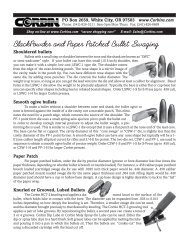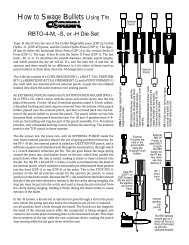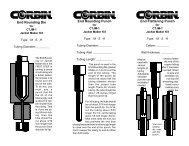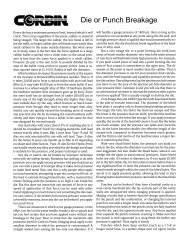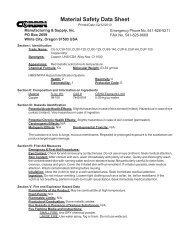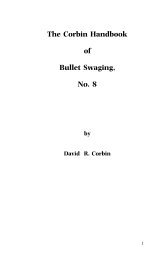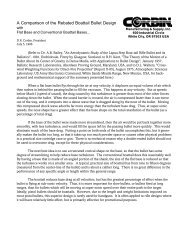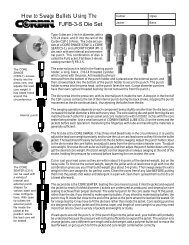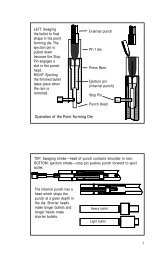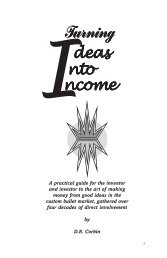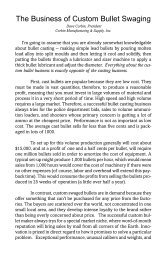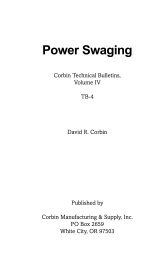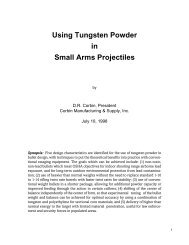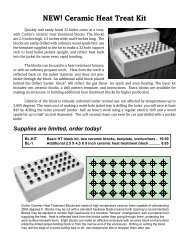HB-9 updated text (PDF) - Corbin Bullet Swaging
HB-9 updated text (PDF) - Corbin Bullet Swaging
HB-9 updated text (PDF) - Corbin Bullet Swaging
You also want an ePaper? Increase the reach of your titles
YUMPU automatically turns print PDFs into web optimized ePapers that Google loves.
make one million bullets in a lifetime of hand swaging. If you could make<br />
two bullets a minute, and worked at it every weekend for four hours,<br />
you’d only be making 24,960 bullets a year.<br />
When run at less than ten strokes a minute with proper lubrication,<br />
the high-carbide content die steels used by <strong>Corbin</strong> hold acceptable tolerances<br />
for at least 500,000 bullets, and some have made over 1,500,000<br />
bullets in commercial operations started years ago. Assuming the dies<br />
would make 500,000 bullets, this means your $300 investment in dies<br />
would last for over 20 years if you made two bullets a minute, working<br />
every weekend for four hours, every week of those years.<br />
If you are just now turning 20 years old, you’d be 40 before you needed<br />
to buy another set at that rate. If you expected to live to be 100 years old,<br />
you would have a lifetime of bullet making on just three sets of dies, for a<br />
total cost of $900. Now, most people don’t make anywhere near 24,960<br />
bullets a year unless they are in business to make bullets. The odds are<br />
great you’d never make 500,000 bullets in a lifetime. But just suppose<br />
you did.<br />
Your cost per bullet for determining die value would be $300 divided<br />
by 500,000 bullets, or .06 cents (six hundredths of a cent) per bullet. In<br />
your lifetime, if you made 1.5 million bullets, you’d use up three sets of<br />
dies, so your total cost per bullet would be $900 divided by 1.5 million<br />
bullets, or .06 cents. This is for using tool steel dies.<br />
If you purchased $3000 carbide dies, you would not get one bit more<br />
accuracy or any better die, other than the fact that long-term abrasion<br />
resistance would be less, so you could get by with one set of dies for your<br />
lifetime. We assumed you might live 100 years, and make 1.5 million<br />
bullets. Your cost per bullet with a carbide die set would be .20 cents per<br />
bullet ($3000 divided by 1.5 million bullets). The steel dies are three and<br />
a third times better value for this application! That is 333% more value for<br />
your money with the steel dies.<br />
The reason I’ve gone so long into this is not any animosity toward<br />
“carbide”, but because of the widely-held perception that just stamping<br />
the word “carbide” on a die automatically blesses the product with supernatural<br />
powers and makes it somehow more accurate.<br />
A die is only as accurate as you can make the hole. It is a lot easier to<br />
make a good die from a material that can be worked in its annealed state,<br />
then hardened and given its final adjustment in size with diamond lapping<br />
in the hard state. The easier a job is to do, the less it has to cost. So,<br />
you get more value: the same accuracy for far less money.<br />
31



